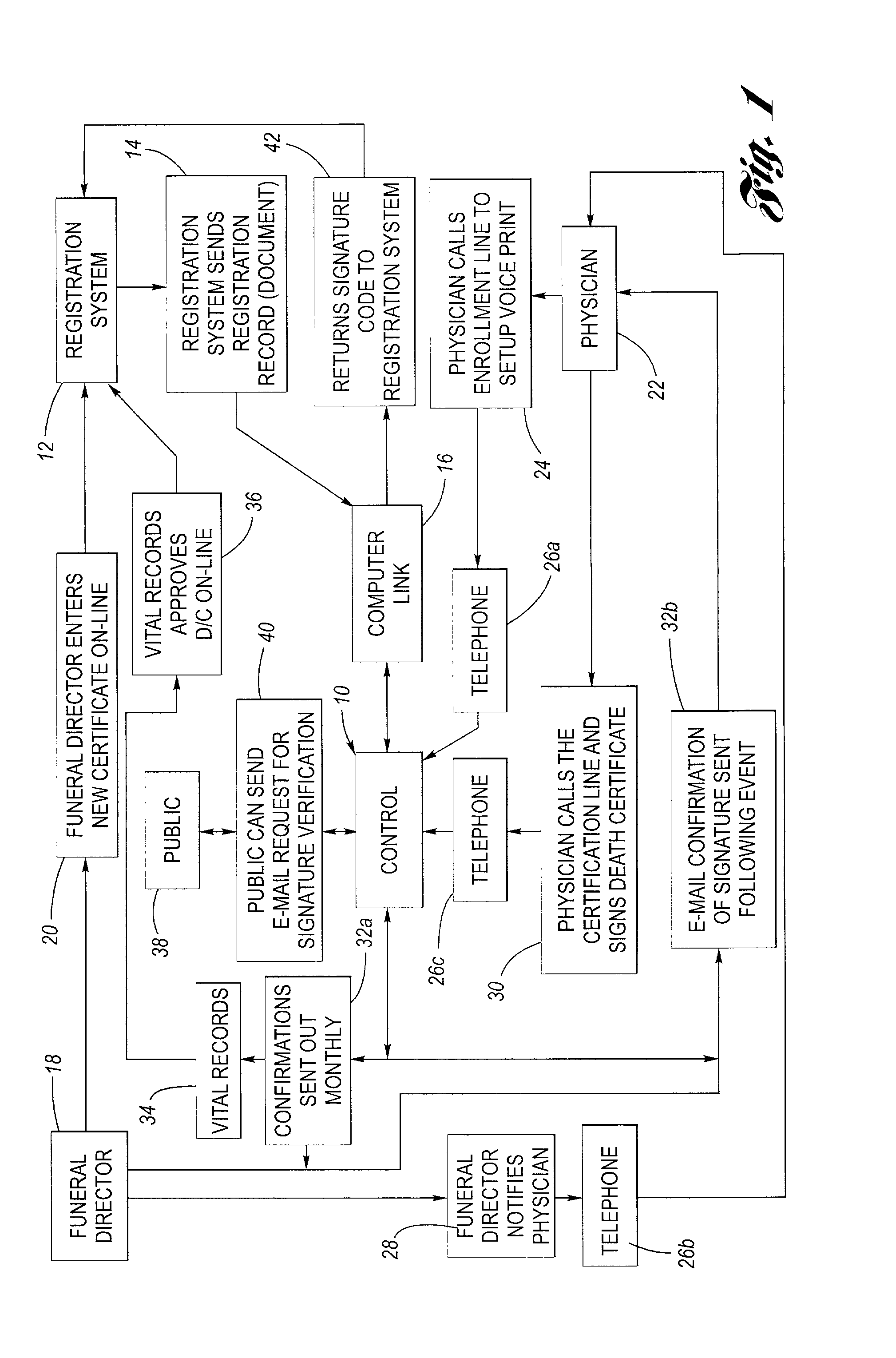Telephonic certification of electronic death registration
a technology of electronic death registration and telephone certification, which is applied in the field of telephone certification of electronic death registration, can solve the problems of difficult to obtain, difficult to use, and potential "looping" can take a considerable amount of time, and achieve the effects of convenient data entry or affirmation, convenient use, and accurate and fast processing
- Summary
- Abstract
- Description
- Claims
- Application Information
AI Technical Summary
Benefits of technology
Problems solved by technology
Method used
Image
Examples
second embodiment
[0072] In step 100, system 10 prompts the physician to provide identifying information so that it can check its database 46, which contains a listing of registered users. There are two embodiments for inputting information, whereby the physician can provide this identifying information to system 10. In a first, preferred, embodiment, system 10 utilizes its voice recognition function (via voice recognition unit 50) to obtain the information via spoken replies of the physician, telephonically over the telephone network, responsive to the prompts of system 10. In a second embodiment, the physician utilizes a telephone keypad input in response to system prompts. The method then proceeds to decision block 102.
[0073] In step 102, upon completing entry of identifying information, the system 10 is configured to check its database of registered users to determine whether the caller is a registered user who has completed a valid enrollment. Three scenarios are contemplated: (1) the caller is ...
first embodiment
[0088] In a first embodiment, in jurisdictions where permitted, the funeral director will have negotiated the cause of death and other medical and non-medical data for the certificate with the physician. This process may have occurred via telephone and / or fax and may be generally outside the actual signature ceremony. Once both the physician and the funeral director are satisfied with the accuracy and validity of the information to be entered, the funeral director enters the medical information on the issuing agency's death certificate registration system.
[0089] In a second embodiment, utilized in jurisdictions where only the attending physician may enter specific information such as cause of death, system 10 employs its voice recognition unit 50.
[0090] In step 130, the system 10 uses a series of recorded-voice or text-to-speech generated phrases to request information from the physician required to complete the death certificate. For example, such information may include the cause ...
PUM
 Login to View More
Login to View More Abstract
Description
Claims
Application Information
 Login to View More
Login to View More - R&D
- Intellectual Property
- Life Sciences
- Materials
- Tech Scout
- Unparalleled Data Quality
- Higher Quality Content
- 60% Fewer Hallucinations
Browse by: Latest US Patents, China's latest patents, Technical Efficacy Thesaurus, Application Domain, Technology Topic, Popular Technical Reports.
© 2025 PatSnap. All rights reserved.Legal|Privacy policy|Modern Slavery Act Transparency Statement|Sitemap|About US| Contact US: help@patsnap.com



